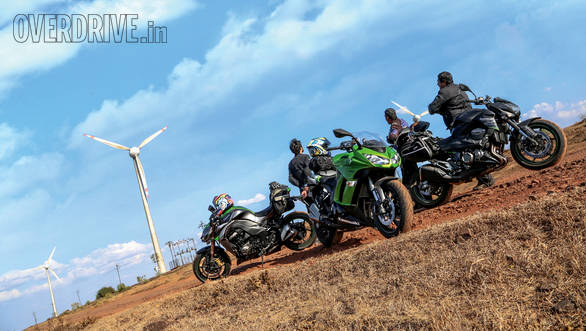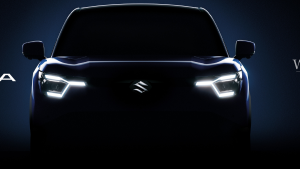The great divide in the Indian motorcycle market
I'm not sure why, but Indians as a people are short-sighted in terms of time. You experience this everyday in stuff that makes perfect sense in hindsight. Like expressways that have two lanes too few, or flyovers that aren't wide enough and so forth. We just cannot see far enough into the future consistently enough to have a bigger vision that we're working towards. And yes, that has to do with motorcycles as well.
The other day, I was discussing - well, mostly I talked and they listened - the differences between the premium motorcycle market and the commuter market. They're quite profoundly apart in nature and outlook.
The commuter buyer is looking for a tool. An appliance that'll cost little, do the business without fuss, be cheap to run and that's about it. Some will fuss over the status or aspirational appeal of one bike versus the other, but across the most reliable brands in the market, the commuter is a commodity. But the motorcycle is a large purchase for these buyers and is, hence, not always considered a dire necessity. Which means a bad monsoon, tough credit environment, a rise in prices, an unstable government... practically any reason at all is enough for a buyer to defer the purchase. This is the central reason why you read in the papers that the two-wheeler market is up, then down, then down some more, then up again. It's the fickle nature of the commuter-class bike buyer combined with the enormous volume of the small bikes that makes the market so sensitive.

The premium market couldn't be more different. The primary driver to purchase is usually an emotional attachment to the motorcycle. The exact nature of this emotion can vary but it's a deeply personal, usually intense desire to own a bike that drives someone like you or me to the showroom. We do still evaluate every option we have in the coldest, hardest way possible. We do want the best value for money proposition if we can, but when a machine ticks enough of your boxes and you get that warm feeling inside, you know you're going to write that cheque. This customer also usually is better off and that means that higher up the price ladder you climb, the smaller the budget needed to buy the bike is compared to their overall wealth. Which means that usually, there isn't any need to postpone a purchase. Which is why, through all the ups and downs of our market, the premium segment usually posts growth.
But here's the thing. The commuters have always drowned out the enthusiasts in the Indian market and talking about the Indian motorcycle market as that sort of a binary structure brings me to some interesting realisations about enthusiasts who are yet to find the budgets required to purchase premium motorcycles.
If I were to be an 18-22 year old who's either in college or just started working, money naturally, would not be flowing like water. And what bike do I purchase in that situation, is a terrifying question. There are media brands like ours that never, ever forget that passion and enthusiasm are the core of motorcycling. Every single motorcycle, even the dullest 100cc example, is seen through that lens. So you could follow a brand like ours and trust our recommendations to find a thrilling, but affordable ride.
Let's not beat about the bush. What I'm saying is that your options are limited to the motorcycles that are fun to ride in the commuter space. Because â" this is the important bit â" no one makes fun motorcycles in the commuter space. A motorcycle's ability to thrill is pure happenstance. That's really sad.
Here is where foresight enters the picture. In Europe, Japan etc, there's a sharp decline in interest when it comes to motorcycles amongst the youth. This isn't hard to understand. Transportation there is easy between effective and cheap public transportation and pedestrian friendly cities. So motorcycles may never even enter their worlds as anything but a fad. Facebook updates every quarter of a second and never causes road rash, so again, arrays of kids on subways, heads buried in the digital sand while life passes them by, is very much a real thing.
At some point, motorcycle manufacturers lost touch with the lion's share of these kids. They never connected to motorcycles, they've never felt the need to ride and many will go through life without ever knowing what an amazing feeling a bike is. For the business, crucially, they'll never spend any of the money they make on bikes. How did this happen? Look back over the last 20 years and you'll see that motorcycles have been getting more complex as well as more expensive. Kids cannot afford complex or expensive.
The same thing will happen here. We are a country full of people who think bikes are unsafe as it is and they're only riding because they cannot afford a car. In this mix are manufacturers who blindly churn out appliance grade motorcycles to a country very young in demographic structure. Do you honestly believe that no one in that anesthetic mass of commuters is in love with motorcycles? So large is the commuter mass that even a small chunk of the mob would be a commercially significant number.
And yet, no one is making fun, affordable motorcycles that'll ignite fires and ensure that five or ten years later, these youngsters, now older and richer, will continue to be interested in, invested in and engaged in motorcycling.
In Europe, some of the most exciting motorcycles are the learner 125s and 250s which promise the world design and ability despite their modest prices and power. And manufacturers hope against hope that every Yamaha YZF-R125 or KTM 125 Duke or Aprilia RS125 buyer grows up to become a lifelong motorcycle enthusiast.
We're shortsighted. We won't figure out that ships need lifeboats no matter how many Titanics sink to the bottom.












